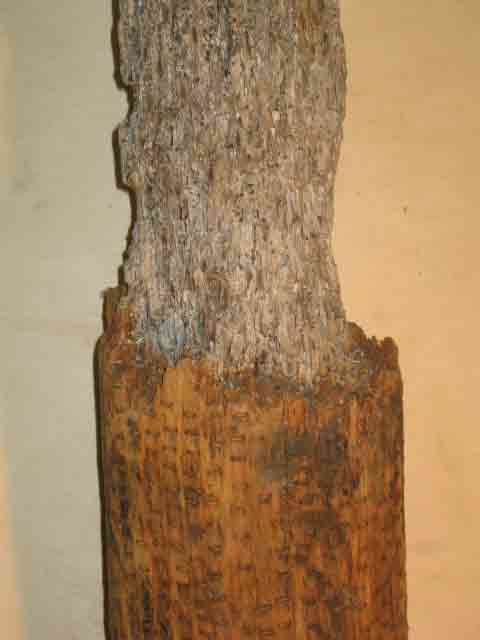TEREDO NAVALIS E LIMNORIA
information from: Michael Kiersgaard
TEREDO NAVALIS and LIMNORIA , - in daily use called SHIPWORM and GRIBBLE, - are two wellknown problemmakers to all mariners and port autorities.
Given the right conditions theese two types of MARINEBORERS are able to destroy shipsbottoms and harbourpilings withinn months.
In the lagoon of Venice, Italy, - where both shipworm and gribble have very good life conditions,- experiments with THE ANTI TEREDO SYSTEMsince 1988 has prooved extreemly satisfying protection of wooden pilings in salt water.
THE ANTI TEREDO SYSTEM- a short introduction
The ANTI TEREDO SYSTEM is based upon research and tests carried out in various ports in Denmark. Described in detail in the report (danish language): Beskyttelsesmidler mod pælekrebs og pæleorm.Dansk ingeniør forening, København 1956.
(Protection against gribble and teredo,Danish ass. Of civil engineers.Copenhagen 1956).
THE ANTI TEREDO SYSTEMis a developement of the experiences made when applying steel nails in a certain- and very important – density to the surface of the wooden pilings in use for harbour constructions.
The steel creates a rusty surface that even penetrates into the wood. This wall of rust infested wood seems to be avoided by the marine wood borers and is at the same time harmless to mussels and fish that might get in contact with the pilings. The surrounding waters do not suffer from polution caused by toxic salts, or the like, deponed in the wood for preservation purpose.
When using the ANTI TEREDO SYSTEM one very interesting fact is THAT NOTHING IS BEING KILLED , but the wood has been made uninteresting for the woodborers to digest.
When using the ANTI TEREDO SYSTEM a service life of 35 to 40 years of normal pilings can be expected in waters that freeze during winter. In waters where ice is not common during winter a longer lifespan can be expected.
Further can be said :
The astetic look of the pilings are not being changed.
Same piledriving companies can do the job as usual.
No toxic waste.
Local timber can be used as usual.
The steel nail system is well known in scandinavian waters, but the experience from the lagoon of Venice , Italy, are the first known to be made in warm climates where shipworm (Teredo navalis) and gribble (Limnoria) seems to have even better lifepossibilities than in the north.
According to below mentioned report the marineborers present in the lagoon of Venice are:
TEREDO NAVALIS
TEREDO PEDICELLATA
TEREDO UTRICULUS
BANKIA MINIMA
LIMNORIA TRIPUNKTATA
CELURA TEREBRANS
Report by:
Felix Rock 1959 (ostr. Akad. Wiss. 1957)
“Zur okologie der holzbewohnende meerestiere in der lagune von venedig sowie der auf den dortigen holzpfale vorkommende seepocken“
Field tests using the ANTI TEREDO SYSTEM has been carried out since 1988 in the lagoon of Venice, Italy, under the supervision of Michael Kiersgaard, Marine surveyor of wooden vessels.
E-mail: mkmarine@tiscalinet.it

mkmarine@tiscalinet.it
